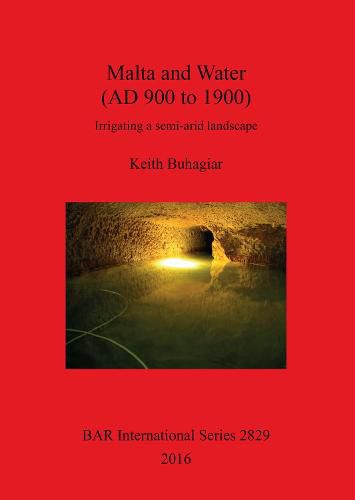Readings Newsletter
Become a Readings Member to make your shopping experience even easier.
Sign in or sign up for free!
You’re not far away from qualifying for FREE standard shipping within Australia
You’ve qualified for FREE standard shipping within Australia
The cart is loading…






This title is printed to order. This book may have been self-published. If so, we cannot guarantee the quality of the content. In the main most books will have gone through the editing process however some may not. We therefore suggest that you be aware of this before ordering this book. If in doubt check either the author or publisher’s details as we are unable to accept any returns unless they are faulty. Please contact us if you have any questions.
This book synthesises archaeological and historical research in order to investigate Maltese water management technology in the Medieval, Early Modern and Modern periods, more specifically between AD 900 and AD 1900. Maltese terrestrial geological formations and stratification are a determining factor in conditioning the formation of subterranean aquifers, water-harvesting and storage, landscape development and utilisation. Central to this publication are reservoirs, cisterns, wells and perched aquifer galleries, which have for centuries provided farmers tilling arable land with a supplementary water source other than the limited and erratic seasonal rainfall. The data and conclusions presented in this book are the result of extensive personal field and archival research and include an assessment of the available documentary sources of evidence, including place names and cartographic sources. Comparative research suggests that a number of perched aquifer subterranean galleries share common characteristics with the qanat technology of the Islamic and Roman worlds and, in a Maltese context, were possibly part of a new agricultural and technological package introduced during the Muslim or post-Muslim period between the eleventh and the fourteenth centuries AD.
$9.00 standard shipping within Australia
FREE standard shipping within Australia for orders over $100.00
Express & International shipping calculated at checkout
This title is printed to order. This book may have been self-published. If so, we cannot guarantee the quality of the content. In the main most books will have gone through the editing process however some may not. We therefore suggest that you be aware of this before ordering this book. If in doubt check either the author or publisher’s details as we are unable to accept any returns unless they are faulty. Please contact us if you have any questions.
This book synthesises archaeological and historical research in order to investigate Maltese water management technology in the Medieval, Early Modern and Modern periods, more specifically between AD 900 and AD 1900. Maltese terrestrial geological formations and stratification are a determining factor in conditioning the formation of subterranean aquifers, water-harvesting and storage, landscape development and utilisation. Central to this publication are reservoirs, cisterns, wells and perched aquifer galleries, which have for centuries provided farmers tilling arable land with a supplementary water source other than the limited and erratic seasonal rainfall. The data and conclusions presented in this book are the result of extensive personal field and archival research and include an assessment of the available documentary sources of evidence, including place names and cartographic sources. Comparative research suggests that a number of perched aquifer subterranean galleries share common characteristics with the qanat technology of the Islamic and Roman worlds and, in a Maltese context, were possibly part of a new agricultural and technological package introduced during the Muslim or post-Muslim period between the eleventh and the fourteenth centuries AD.